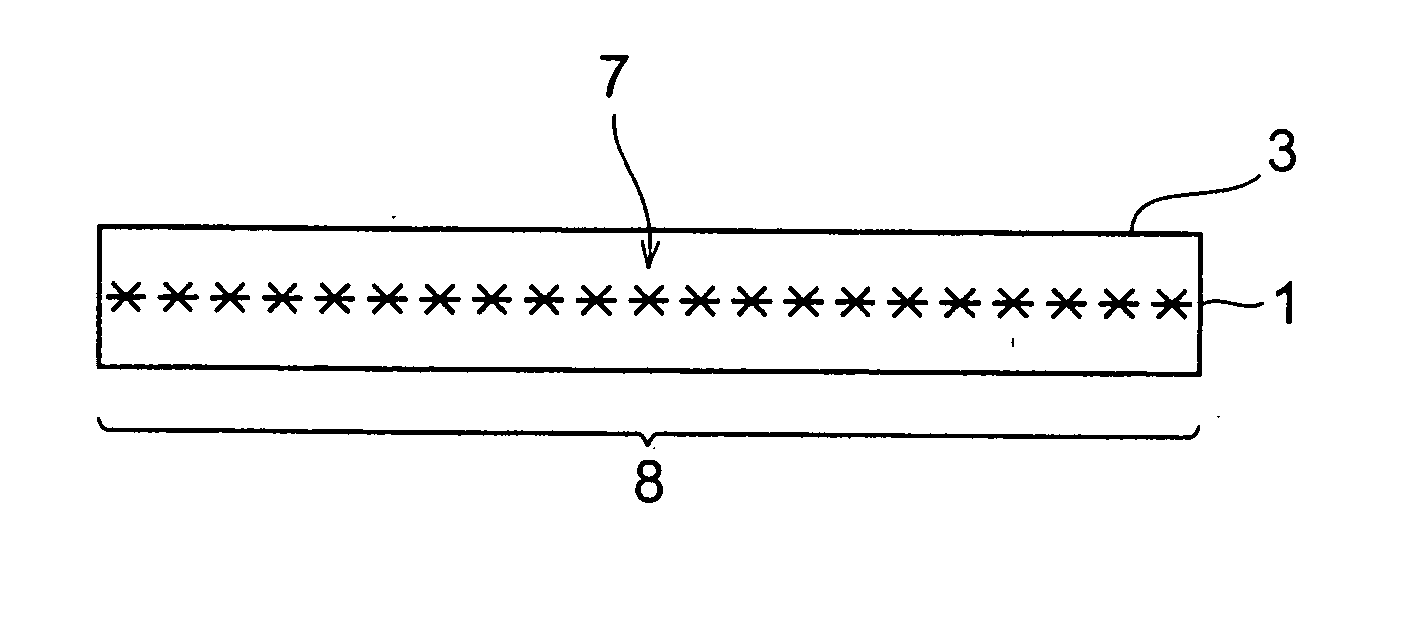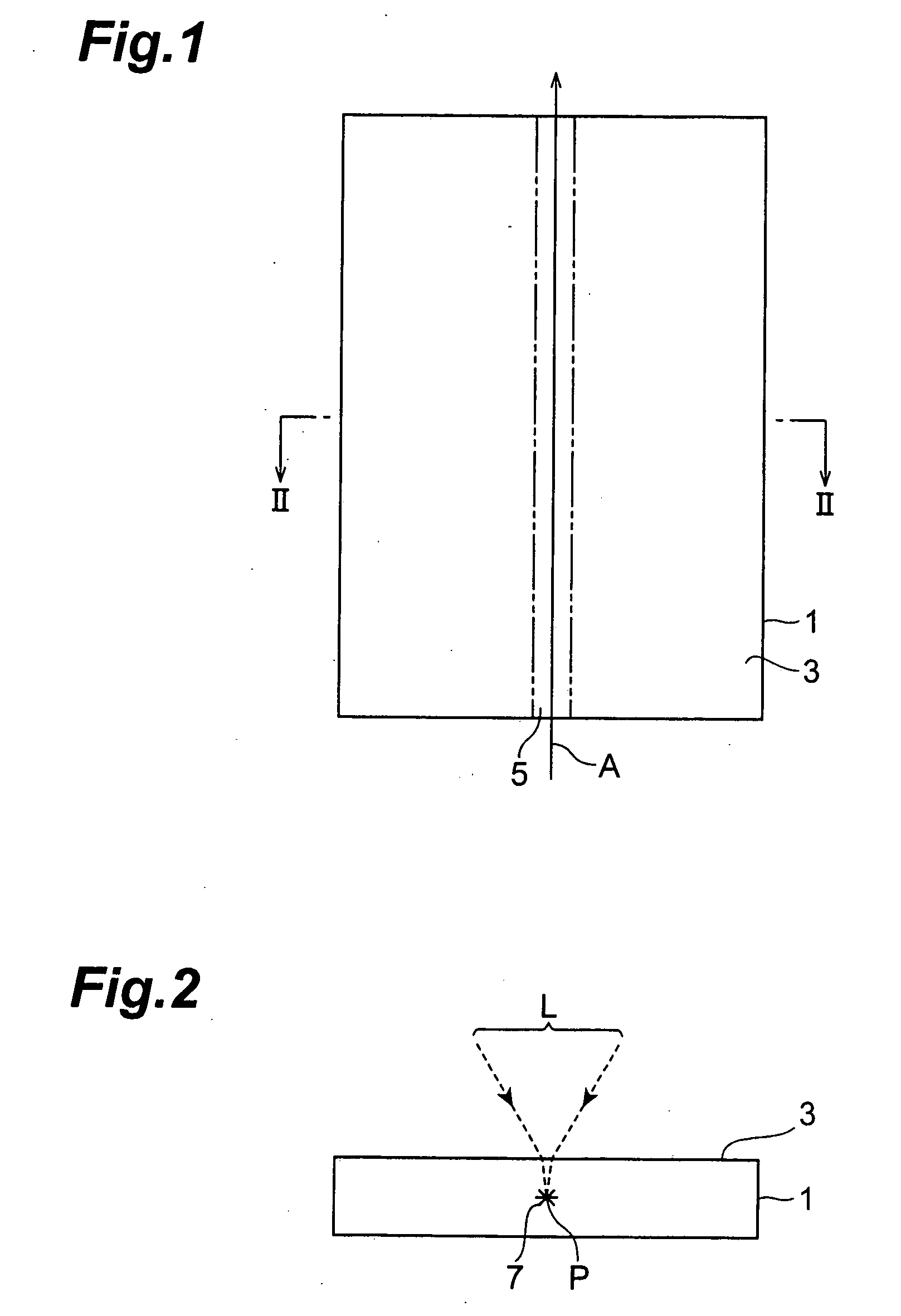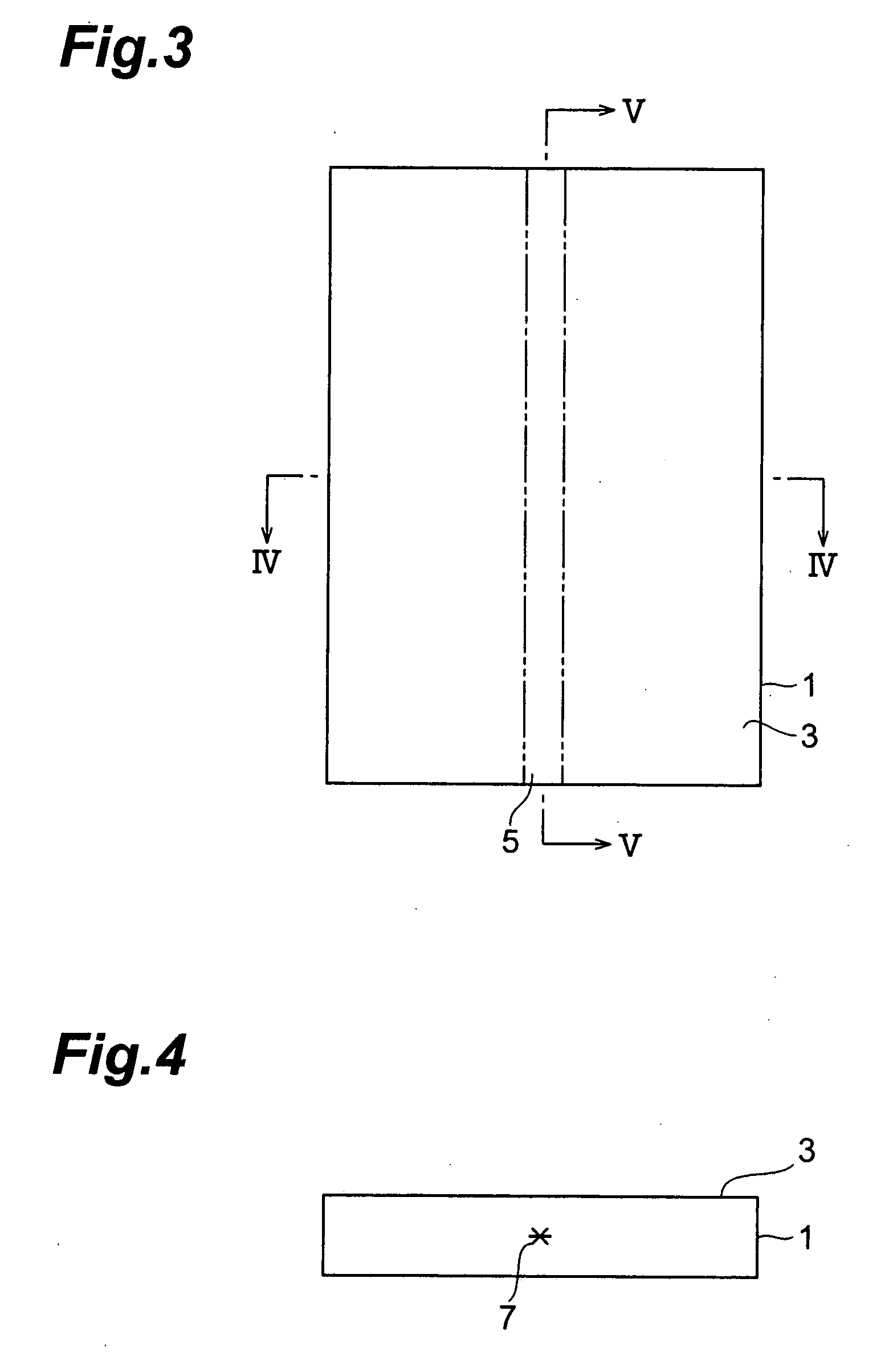Substrate dividing method
a substrate and dividing method technology, applied in the direction of manufacturing tools, welding/soldering/cutting articles, semiconductor/solid-state device details, etc., can solve the problems of side face chipping and cracking, and achieve the effect of preventing chipping and cracking and improving the transverse rupture strength of chips
- Summary
- Abstract
- Description
- Claims
- Application Information
AI Technical Summary
Benefits of technology
Problems solved by technology
Method used
Image
Examples
example 1
[0112] Example 1 of the substrate dividing method in accordance with the present invention will now be explained. Example 1 is directed to a case where the substrate 1 is a silicon wafer (having a thickness of 350 μm and an outer diameter of 4 inches) (“substrate 1” will hereinafter be referred to as “semiconductor substrate 1” in Example 1), whereas the front face 3 of the semiconductor substrate 1 is formed with a plurality of functional devices in a device manufacturing process.
[0113] First, before explaining a step of forming a starting point region for cutting within the semiconductor substrate 1, a laser processing apparatus employed in the step of forming a starting point region for cutting will be explained with reference to FIG. 14. FIG. 14 is a schematic diagram of the laser processing apparatus 100.
[0114] The laser processing apparatus 100 comprises a laser light source 101 for generating laser light L; a laser light source controller 102 for controlling the laser light...
example 2
[0147] Example 2 of the substrate dividing method in accordance with the present invention will now be explained with reference to FIGS. 27 to 35. Example 2 relates to a case where the substrate 1 is a sapphire substrate (having a thickness of 450 μm and an outer diameter of 2 inches) which is an insulating substrate (“substrate 1” will hereinafter be referred to as “sapphire substrate 1” in Example 2), so as to yield a semiconductor chip to become a light-emitting diode. FIGS. 28 to 35 are sectional views of the sapphire substrate 1 taken along the line XX-XX of FIG. 27.
[0148] First, as shown in FIG. 28, the sapphire substrate 1 is irradiated with laser light L while a light-converging point P is positioned therewithin, so as to form a modified region 7 within the sapphire substrate 1. In a later step, a plurality of functional devices 19 are formed like a matrix on the front face 3 of the sapphire substrate 1, and the sapphire substrate 1 is divided into the functional devices 19...
PUM
| Property | Measurement | Unit |
|---|---|---|
| thickness | aaaaa | aaaaa |
| thickness | aaaaa | aaaaa |
| thickness | aaaaa | aaaaa |
Abstract
Description
Claims
Application Information
 Login to View More
Login to View More - R&D
- Intellectual Property
- Life Sciences
- Materials
- Tech Scout
- Unparalleled Data Quality
- Higher Quality Content
- 60% Fewer Hallucinations
Browse by: Latest US Patents, China's latest patents, Technical Efficacy Thesaurus, Application Domain, Technology Topic, Popular Technical Reports.
© 2025 PatSnap. All rights reserved.Legal|Privacy policy|Modern Slavery Act Transparency Statement|Sitemap|About US| Contact US: help@patsnap.com



